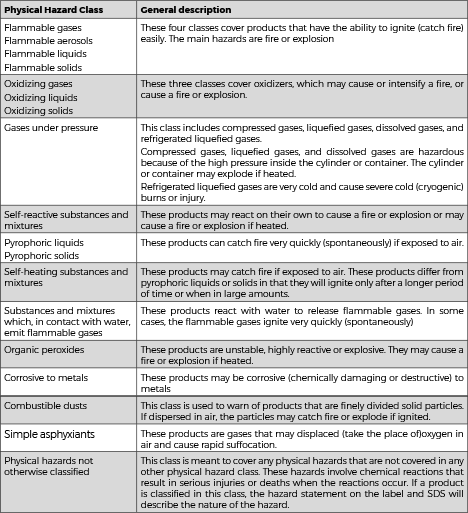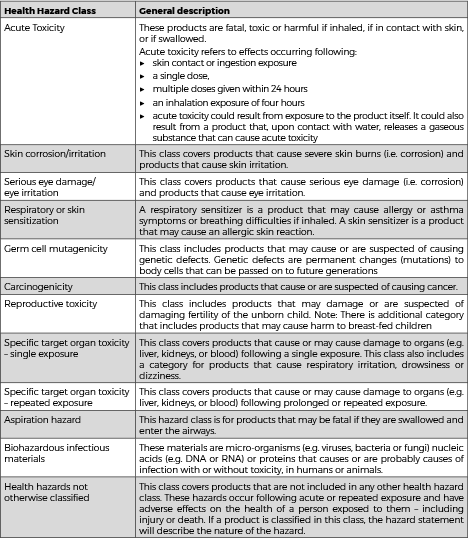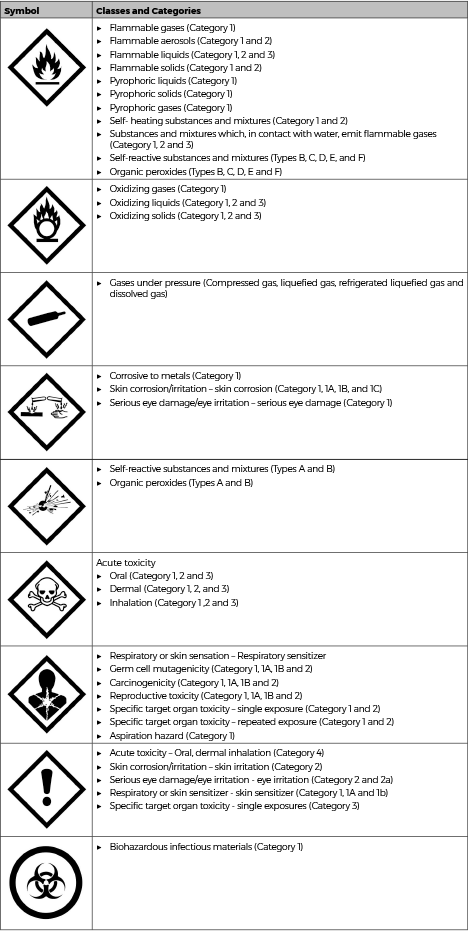WHMIS 2015 divides hazardous products into two major hazard groups: physical hazards and health hazards. The two groups are further divided into a number of classes.
- Physical hazards, based on the physical or chemical properties of the product, such as flammability, reactive or corrosively to metals
- Health hazards, based on the ability of the product to cause a health effect such:
- Eye irritation
- Respiratory sensitization (may cause allergy or asthma symptoms or breathing difficulties
- Carcinogenicity (may cause cancer)
Physical Hazards
A physical hazard is a product that fall into one or more of the hazard classes. Suppliers classify products and assign one or more of the appropriate symbols.

Health hazards

Each hazard class contains at least one category. The hazard categories are assigned a number (1, 2 etc.). Categories can also be called “types” that are assigned an alphabetical letter (A, B, C, etc.).
In some case, subcategories are specified and are identified with a number and letter (ex. 1A and 1B).
The category and subcategory identify the severity of the hazardous product
- Category 1 is always the greatest level of hazards. If Category 1 is further divided, Category 1A is greater than Category 1B
- Category 2 within the same hazard class is more hazardous than Category 3

